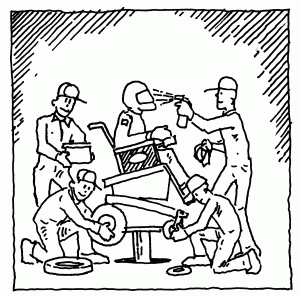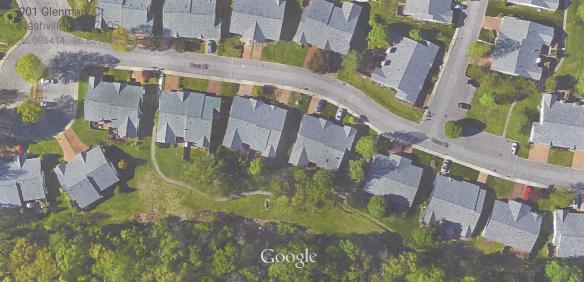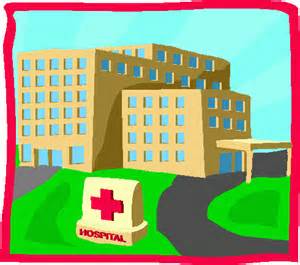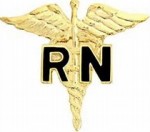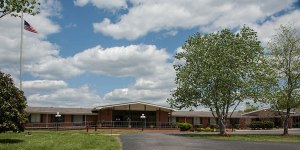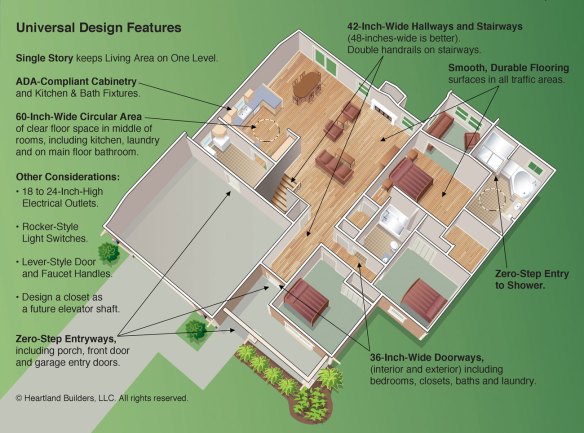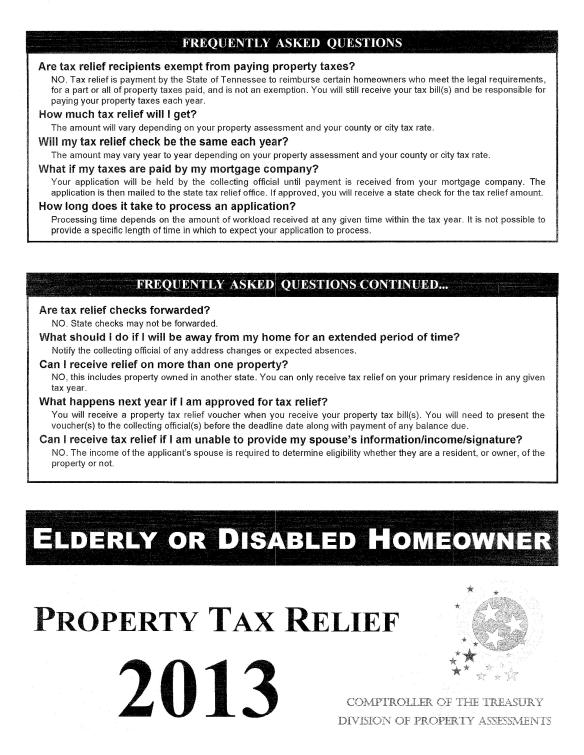TSU & MTSU
Fee Discounts and Waivers
Senior Adult Discount
Rules & Procedures
Senior Adult Fee Discount/Waiver rules and forms are available at the university or college Admissions Office. Senior Adult students should register and submit these forms to the Bursar’s Office as outlined below.
T.C.A. 49-7-113. Disabled and Elderly Persons–Auditing or Enrollment.
(a)(1) Disabled persons suffering from a permanent total disability which totally incapacitates such person from working at an occupation which brings him an income, and persons who have retired from state service with thirty (30) or more years of service, regardless of age, or persons who will become sixty (60) years of age or older during the academic quarter or semester, whichever is applicable, in which such persons begin classes and, who are domiciled in Tennessee, may audit courses at any state-supported college or university without paying tuition charges, maintenance fees, student activity fees or registration fees; however, this privilege may be limited or denied by the college or university on an individual classroom basis according to space availability.
(a)(2) The provisions of this section shall not apply at medical schools, dental or pharmacy schools, and no institution of higher education shall be required to make physical alterations of its buildings or other facilities to comply with this section.
(a)(3) Prior to admittance, the university or college involved may require an affidavit or certificate from a physician or an agency charged with compensating the disabled person or adjudicating the permanent total disability of the person who is requesting admittance to classes, that such person is permanently totally disabled as set forth herein.
(a)(4)A student who is receiving services under federal or state vocational rehabilitation programs is not eligible for a waiver of tuition and fee benefits under this section. (b) Subject to the same terms and conditions as provided in subsection (a), disabled persons, as defined in subsection (a), and persons who will become sixty-five (65) years of age or older during the academic quarter or semester, whichever is applicable, in which such persons begin classes and, who are domiciled in Tennessee, may be enrolled in courses, for credit at state-supported colleges and universities without payment of tuition charges, maintenance fees, student activity fees or registration fees, except that the board of trustees of the University of Tennessee and the board of regents of the state university and community college system may provide for a service fee which may be charged by the institutions under their respective jurisdictions, the fee to be for the purpose of helping to defray the cost of keeping the records of such students and not to exceed seventy dollars ($70) a semester.
About OLLI at Vanderbilt…..
Who can participate?
Membership is open to anyone over the age of 50. We have no restrictions based on educational background.
How much do courses cost?
$80 for three courses in a specific term with $10 for each additional course.
How much do “special class offerings” cost?
Special classes vary depending on the number of sessions and number of students accepted in the class. Basically, we determine how much each session cost OLLI and charge accordingly.
How do I register for courses and special events?
We have created a tutorial with instructions to help navigate the registration process.
How do I retrieve my user name and password to register online once I create an account if I’ve forgotten that information?
Please view the attached instructions on retrieving your account username and password information.
Is there homework or exams?
For regular classes, there is no homework or exams. Occasionally, there will be recommended reading which is optional. The exception to this would be our writing seminar which does have assignments but no exams.
How much do Lunch and Learn sessions cost?
Our “Lunch and Learn” sessions provide a lecture on a specific topic and are free to all members. An optional lunch is provided prior to the lecture for a $10 fee. Reservations are required for both the lecture and the box lunch.
Who teaches OLLI at Vanderbilt courses?
Our courses are taught by a wide variety of qualified personnel. The majority are current or retired Vanderbilt professors, but there are also many who come from other educational institutions, government and business. Our curriculum committee reviews each proposed course and confirms that the instructor’s background is appropriate.
Where do I park for the OLLI classes?
When classes are held at area churches, complimentary parking is provided at the church. When classes are held on campus, complimentary parking is provided at the Centennial Sportsplex as well as a shuttle to pick you up and take you to campus. The shuttles run the entire morning during class time in case you come late or need to leave early.
Do you hold class in inclement weather?
It is rare that we cancel class, but if a class (or event) is cancelled due to inclement weather, it will be posted on the OLLI at Vanderbilt website by 8:00a.m. the morning of the event.
About Lifelong Learning at Lipscomb…..
Session I – January 28 – March 7
Mondays—
Wilder and Wilder: A Film Sampler from Billy Wilder
February 3, 10, 17, 24 (Please note the longer class time and 4 weeks only) 3:00-5:15 p.m. Ezell Center, Room 136 Cost $60 Instructor: Dr. Matthew Hearn, Lipscomb University Professor, Department of English
As the “dark genius” of American comedy, Billy Wilder wrote and/or directed a remarkably diverse series of Oscar-winning films in Hollywood after emigrating to the U.S. to escape the rise of Nazism in his native Austria. Join us as we sample and discuss some of his classics: Ball of Fire (with Barbara Stanwyck and Gary Cooper, 1941), The Lost Weekend (with Ray Milland and Jane Wyman, 1945), Stalag 17 (with William Holden, 1953), and The Apartment (with Jack Lemmon and Shirley McClaine, 1960).
Tuesdays—
Presidents You Wish You Knew More About
February 4, 11, 18, 25 and March 4 3:00-4:30 p.m. Ezell Center, Room 136 Cost $60 Instructors: Libby Lacock, Hank Davis, and Dr. Tim Johnson. Libby and Hank are both members of the Lipscomb University Lifelong Learning Advisory Board and Dr. Tim Johnson is a Lipscomb University Research Professor in the Department of History
Barack Obama is the 44th President of the United States but is only the 43rd man to serve. If you come to this class you might find out why. Each week we will deal with one or two Presidents that are less familiar to most people. It is interesting that most of these men were elected Vice President and succeeded a President who died in office. This term will deal with:
- Both Johnsons – Andrew and Lyndon succeeded Lincoln and Kennedy. There were some similarities as well as great differences.
- Ulysses S Grant – did you know that was not his real name? He was a close friend of Lincoln’s and was devastated by his assassination.
- Millard Fillmore and Franklin Pierce – 13th President who succeeded Taylor and the 14th President who was elected in his own right.
- Warren G. Harding – 29th President, elected in his own right but died in office and was succeeded by Coolidge.
- John Tyler – 10th President and the first man to succeed a President.
Wednesdays—
Ancient China, Global China: Understanding China’s History, Government, Culture and Economy
February 5, 12, 19, 26, and March 5 3:00-4:30 p.m. Swang Center, Room 108 Cost $60 Facilitator: Turney Stevens, Dean, College of Business and Professor of Management
In this study of ancient China as a global economy we will study issues that deal with the country’s history, government, culture and economy. Each week will deal with the following:
- Week 1: From Yao to Mao: 4000 Years of Chinese History in 90 Minutes
- Week 2: Communist or Capitalist? China’s Inscrutable Government
- Week 3: Which Mattered Most? Western Culture or Eastern Culture?
- Week 4: Today’s Global Economy: China as Titan
- Week 5: China’s Masses: Warmhearted or Warriors?
Suggested Reading for Individual Purchase:
- Henry Kissinger: On China (New York: Penguin Books, 2011) At Amazon, Paperback $14
- Jung Chang: Wild Swans: Three Daughters of China (New York: Touchstone Books, 2003) At Amazon, Paperback $12.78
- Nien Cheng: Life and Death in Shanghai (New York; Penguin Books, 1986) At Amazon, Paperback $13.11
- Simon Winchester: The Man Who Loved China: The Fantastic Story of the Eccentric Scientist Who Unlocked the Mysteries of the Middle Kingdom (New York: Harper Perrenial , 2008) At Amazon, Paperback $11.73
Thursdays—
Great Decisions: An Analysis of Eight Issues of Concern to U.S. Policymakers Today
February 6, 13, 20, 27 and March 6 3:00-4:30 p.m. Ezell Center, 3rd Floor, Andrews Institute Cost $60 or more depending on course length Facilitators: Linda Peek Schacht, Lipscomb University, Executive Director of the Nelson and Sue Andrews Institute for Civic Leadership and Mary Pat Silveira, retired 30 year veteran of the United Nations
Great Decisions is America’s largest discussion program on world affairs. The name is shared by a national civic-education program, briefing book and television series administered and produced by the Foreign Policy Association. The Great Decisions program highlights eight of the most thought-provoking foreign policy challenges facing Americans each year. Great Decisions provides background information, current data and policy options for each issue and serves as the focal text for discussion groups.
Topics to be discussed include:
- Defense Technology
- Israel and the U.S.
- Turkey’s challenges
- Islamic awakening
- Energy Independence
- Food And Climate
- China’s foreign policy
- U.S. trade policy
You can order your Great Decisions 2014 Briefing Book at: www.fpa.org
Fridays—
“As the Page Turns” Book Club
February 7, 21, March 7, 28 and April 11, 25 (Note: Special Meeting Dates) 10:00-11:30 a.m. Meeting at the Avalon Home Cost $60 for both sessions Instructor: Kay Wyatt, Lipscomb University graduate, M.A.T. English from MTSU, and retired Lipscomb Academy English faculty.
Join our first ever Lifelong Learning Book Club as we read and discuss the following books of fiction and nonfiction, every other week for six meetings spanning both sessions (No class March 21st due to Spring Break):
- (2/7) The Day the World Came to Town by Jim Defede
- (2/21) The Book Thief by Marcus Zusak
- (3/7) Outliers: The Study of Success by Malcolm Gladwell
- (3/28) Major Pettigrew’s Last Stand by Helen Simonson
- (4/11) Quiet: The Power of Introverts in a World that Can’t Stop Talking by Susan Cain
- (4/25) The End of your Life Book Club by Will Schwalb
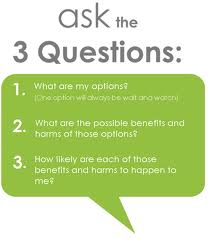 I have struggled with some slow healing wounds on my leg. One wound clinic could not help as I struggled for several months. Sooo…I followed a suggestion I heard a time ago; “It makes no sense to repeat the same action over and over again and expect different results.”
I have struggled with some slow healing wounds on my leg. One wound clinic could not help as I struggled for several months. Sooo…I followed a suggestion I heard a time ago; “It makes no sense to repeat the same action over and over again and expect different results.”

